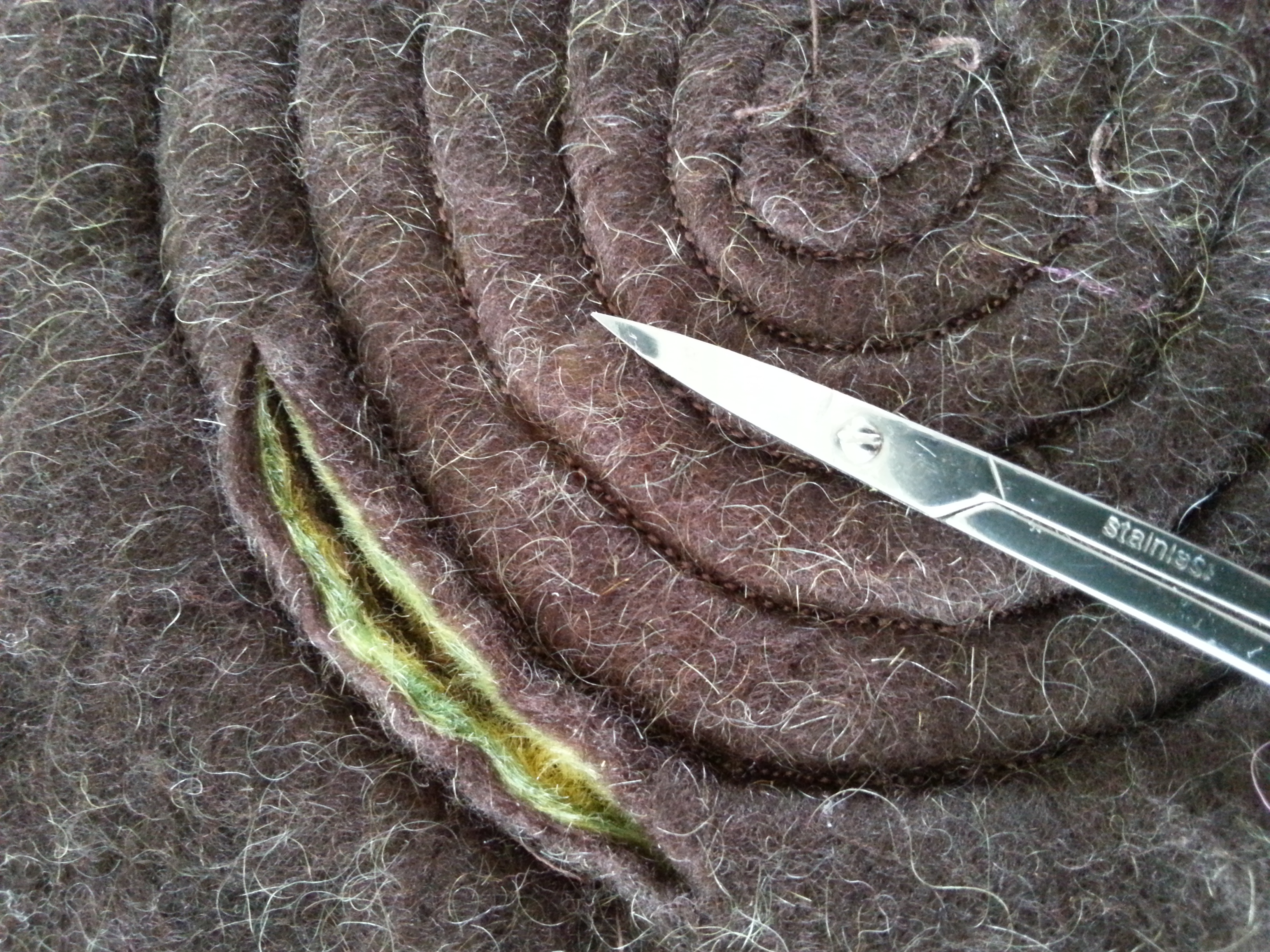This final assignment was exciting but also quite daunting, being essentially self-guiding based on the progression through the module. Tutor feedback from earlier modules was, however, very helpful in helping me to determine the direction of my work and how to approach this assignment.
It was a very interesting exercise to go back through the body of work from start to finish and to see the work with ‘fresh eyes’. There were aspects of pieces I originally felt were unsuccessful that I could now appreciate having learned more during the course. For example, the wool felt piece from Assignment 3 wasn’t particularly successful. However, it did give me ideas for the later felt pieces in Assignment 5 with regard to embedding objects in felt, adding texture to felted fabrics, embellishing.
The resulting samples encouraged me to try many different media, techniques and materials; knitting, crochet, stitch, print, felting and combining several techniques to see how this might work in the final piece.
I feel that the selection of felt as the principle medium was the right one and I am pleased with the final piece. It incorporates a wide range of the techniques explored during earlier exercises, draws on my skills gained outside the course brief, takes inspiration from the artists I have most enjoyed researching and also takes its overall form from aspects of nature and the natural world that I find fascinating.
I have used stitch, joining, cutting and layering, texturing, dyeing and colour. I have taken inspiration from felting artists such as Anneke Copier, taking from it her concepts of textural felts but putting my own spin on them, creating the folds and ridges through stitch and cutting rather than moulding. Inspiration for the shapes comes from explorations throughout the course of spirals, galaxies, orbits, primitive structures/henges, spiritual places, ancient noni carvings and other contemporary interpretations like mazes.
Revision of final samples following tutor feedback
Following feedback from the tutor I created a second set of samples. I used felt as we both considered this to be the best medium of the samples I trialled earlier. However, the intention was to be more innovative and experimental, concentrating more on exploration of the medium and not so much focused on a fully resolved piece. The outcomes of these experiments were more successful and details can be found here.
This was a much more varied and experimental set of samples than my original selection for the final prototype/maquette. Whilst these samples are less resolved, they are more creative and exciting. Of the set, the final sample is my preferred piece as it is the most tactile, exciting and incorporates the best parts of the techniques I attempted.
Overall thoughts on the course
I had reservations about aspects of this course, struggling to see the potential links between non-textile media such as clay, concrete, plastics and what I would consider to be textile arts. However, as I have progressed through the course I have enjoyed the freedom and experimental nature of working with completely different materials and using traditional textiles in unconventional ways.
On reviewing the coursework as a body of work in its entirety, there are clear links and a progression/integration of many of the media used into the ‘pure’ textiles environment. I feel that the course has really opened my eyes to the use of ‘non-textile’ media within a textile-based context. In short very much the epitome of its title, Mixed Media for Textiles.
I have developed existing skills and explored a number of new techniques/ways of working: Some of the aspects I enjoyed most were in the printing assignment and there is so much more to explore in this field. Moulding and casting, whilst incredibly frustrating at times, has yielded lots of new ideas for textile interpretations. I also intend to go back to some of the materials with a view to refining my skills and understanding; working out how to make plaster of Paris, clays etc. to make moulds or to embed/incorporate with textiles for example.
This has been a valuable course, broadening my perspective and encouraging me to be experimental whilst continuing to develop and deepen my existing skills. During my research I have encountered many inspiring artists. I have learned how to use the work of artists I admire as a springboard to developing my own personal voice. The emphasis on recording, reflecting and analysis of my own and others’ work has also been effective in making me review my work more critically which means I am developing and will continue to develop as an artist.
